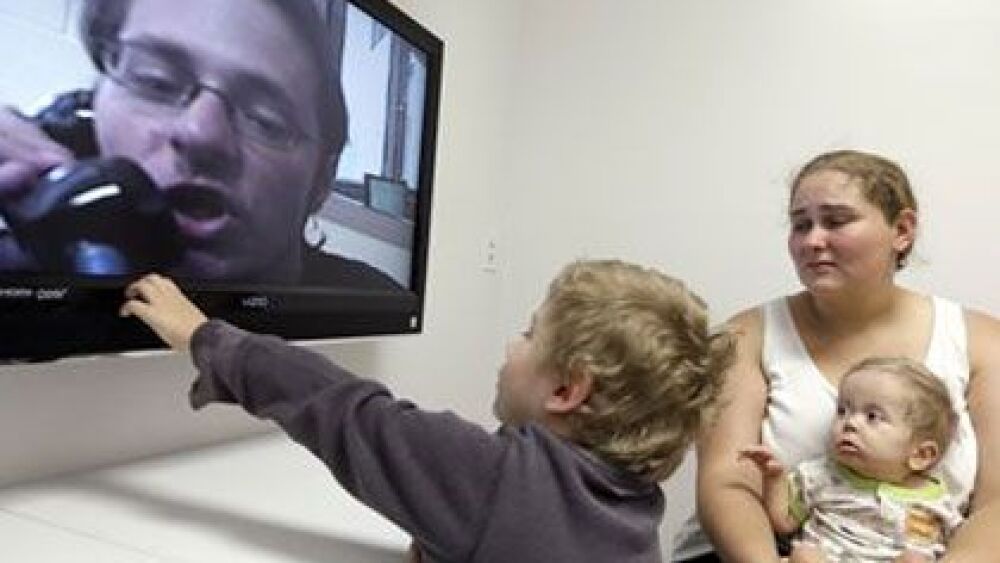Three women arrived at the prison early on Saturday morning wearing dresses. The dresses just passed the dress code for visitation however the women wore no under garments. The women one by one were directed by correctional officers to a private search area and given a pat search by a female officer. This is not a strip-search. All pockets are emptied and only one vehicle key, an identification card and a set amount of cash is allowed inside for canteen items. A bra shake is conducted but not a strict inspection of the bra to find hidden compartments for pills or contraband. No body cavity checks for visitors of course.
Once inside the visitation park the women waited anxiously for their husbands to come in for the visit. One inmate at a time, the men went into a search room with a male officer to be strip-searched. Mouth open, tongue up and down, butt checks spread and testicles lifted. This is the reality of prison life and what officers must do to protect others from weapons or contraband. It’s a thankless dirty job in the strip room. After the all-clear the inmate is then allowed to enter the visitation park to see family members.
Once the visitation park was full, one of the three inmate husbands stood up and entered the men’s restrooms. The only officer in the visitation area moved into a position between the restrooms, with a good view of the visitation area. The officer allowed the woman who followed a couple of minutes later to go into the men’s restroom. The officer had already received his monthly cashier’s check at his private P.O. Box for his job as a lookout while inmates had sex with their wives or girlfriends.
Eventually other visitors became tired and upset about this routine and filed a complaint with the Inspector General’s Office. I met with the three women for an interview. All three women were pregnant. All the women admitted to being pregnant by their incarcerated husbands. They also provided copies of cashier’s checks sent to a P.O. Box for the lookout officer. The officer was terminated from his job and lost his certification for life. He pleaded guilty in court and was sentenced to felony probation. The women had all visitation rights terminated only to fight the decision and get all their visitation rights restored after the agency gave in.
Is contact visitation really a place for children?
The above incident is true and is one example of what can happen with face-to-face or contact visits. Sex in visitation has been an ongoing problem for years in many prisons. Staff shortages contribute to this problem, many times leaving only one officer in visitation. One officer cannot see everything and the result is children are born every year to fathers in prison following a prison visit.
Visitors have even reported to me that inmates plan a distraction to keep the officer occupied and visitors have gone under the tables to give oral sex to the male inmate while families and children are present. This is not only sick but rude and disrespectful to other families. It is not just the sex but drug exchanges and vulgar language. Domestic disputes have erupted as well in the visitation area. This is hardly a good environment for children. I understand children need to know their parents but can perhaps video visitation is a better option.
Contraband concerns
The other dangers we face with contact visitation include the issue of drug smuggling by visitors. In prison, contraband for inmates is a necessity. Inmates consider it their job to find ways to introduce contraband into the prison. For the inmates, controlling contraband means power. The appearance of wealth to an inmate is probably the most powerful weapon an inmate can have, even better than physical strength. If an inmate can obtain power through contraband, he or she can purchase “muscle,” or protection.
Visitation is one of the avenues to smuggle drugs into prison. Visitors smuggle drugs into prison a number of different ways. People not familiar with prison are often amazed at what a visitor will do to smuggle contraband to a loved one. I always had one question for a visitor after we caught them with drugs; does the loved one in prison really love you or are they just using you to get what they want at your risk?
Some visitors will smuggle drugs inside their body cavities. Others will sew hidden compartments inside their clothing or a woman’s bra to conceal contraband. Children have been used to smuggle drugs into prison by placing the contraband inside their diapers and clothing in hopes the officers do not search the children very well for fear of complaints or false allegations of inappropriate touching. Visitors know all the tricks and trigger words to file complaints and many will turn any situation into a complaint. It is hard enough dealing with the inmates but the added pressure of dealing with complaining visitors can add to an already stressful job.
Family members have even hid in the wood lines and shot arrows onto the prison recreation field with contraband tied to the arrow. Now we have drones to worry about. The list is endless and the visitors’ imaginations, with the help of the inmates, bring new ideas and twists to drug smuggling every year.
What is the solution?
Many institutions have already gone to noncontact visitation with a division of Plexiglas separating the visitor and inmate. More jails than prisons have gone to video visitation. With this type of visitation there is no contact whatsoever. Just think of Skype and that is how it works. Visitors enter a building not attached to the prison or jail and sign in. They are given a number for a booth and a video screen. The inmate remains in the dormitory and connects with a video unit in his or her dorm. A phone receiver is used to talk with the inmate. This type of visitation eliminates the threat of contraband or weapons getting to the inmate and helps in a big way with staff shortage issues.
Why is video visitation good?
Over 500 jails and prisons across the country have gone to video visitation, the majority being jails. Why does this system help us?
- Reduces the problem with staff shortages
- Visitors pay 20 cents to a dollar a minute to visit and a percentage goes to the agency
- Reduces and/or stops visitor contraband smuggling
- Prevents visitors from attempting to have sex
- Increases security and officer safety
- Removes the task of having to use manpower to escort the inmates to visitation
- Visitors from far away do not have to drive, they can Skype from home
- Visitation can last longer or more frequent visits
- Provides a cleaner environment for children and more private environment for them.
- Visits can be terminated at any time when inappropriate behavior occurs such as heated arguments or removal of clothing. It just takes a flip of the switch and the visit is over.
- Recidivism is at approximately 90 percent so face-to-face visits are not helping reform inmates.
Arguments against video visitation
Many states are running up against advocacy groups that are actively fighting against video visitation, stating the quality of the visit is not the same and all it does is make money for private businesses and the prison system. The families of inmates claim it is a ploy to make money at the expense of their loved ones. The campaign to restore face-to-face visits has grown so big that some agencies have gone back to the face-to-face visits rather than fight the costly battle in court. Advocacy groups argue video visits exploit families financially and the quality of the visit is lost.
No matter which type of visitation your agency is using continue to stay alert, report wrongdoings and stay strong. We must come up with new ways to stop contraband, sex and violence during visitation. I prefer the video visitation for the safety and security of the agency.
As a former correctional officer and prison inspector I believe it would put a stop to a lot of crime as well as eliminate many dangers and temptations. Until next time, stay safe and thank you for serving.













